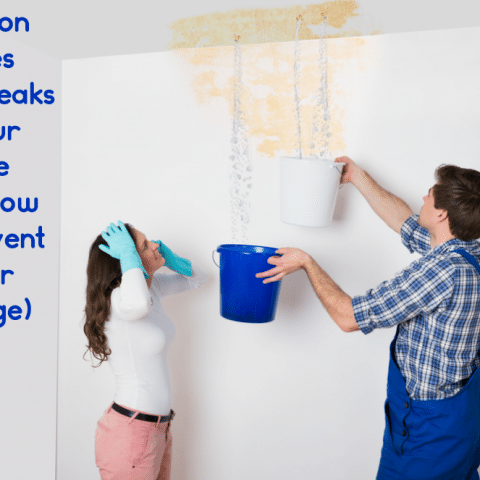They are making several great points related to Leaking water lines in general in this content followed below.

Early discovery of leaking water lines can reduce a potential disaster. Some little water leakages might not be visible.
1. Examine the Water Meter
Every residence has a water meter. Examining it is a guaranteed manner in which assists you discover leakages. For beginners, shut off all the water resources. Make sure nobody will certainly purge, use the tap, shower, run the washing machine or dish washer. From there, most likely to the meter as well as watch if it will transform. Because no one is utilizing it, there ought to be no movements. If it relocates, that suggests a fast-moving leakage. If you identify no modifications, wait a hr or two and also check back once more. This implies you might have a slow leak that might also be underground.
2. Examine Water Usage
If you detect abrupt adjustments, despite your consumption being the very same, it indicates that you have leakages in your plumbing system. An abrupt spike in your costs indicates a fast-moving leak.
Meanwhile, a constant increase on a monthly basis, despite having the very same routines, reveals you have a sluggish leakage that's additionally slowly rising. Call a plumber to completely examine your residential or commercial property, especially if you feel a cozy location on your flooring with piping below.
3. Do a Food Coloring Examination
When it comes to water consumption, 30% comes from toilets. If the shade somehow infiltrates your bowl throughout that time without flushing, there's a leakage in between the storage tank as well as bowl.
4. Asses Outside Lines
Do not forget to check your exterior water lines as well. Test spigots by affixing a yard hose pipe. Should water seep out of the link, you have a loosened rubber gasket. Replace this and also make sure all connections are tight. If you have actually obtained a lawn sprinkler, it will aid get it expertly examined and also kept every year. One little leakage can throw away tons of water and spike your water costs.
5. Check and Examine the Situation
Home owners should make it a habit to examine under the sink counters and also inside cabinets for any kind of bad odor or mold development. These 2 red flags show a leak so timely focus is needed. Doing regular assessments, also bi-annually, can conserve you from a significant issue.
Check for discolorations as well as weakening as most appliances and pipelines have a life expectancy. If you believe dripping water lines in your plumbing system, do not wait for it to escalate.
Early discovery of dripping water lines can mitigate a prospective catastrophe. Some small water leaks may not be visible. Checking it is a surefire means that helps you uncover leakages. One tiny leak can lose lots of water and also surge your water bill.
If you think dripping water lines in your plumbing system, don't wait for it to rise.
How to Know If Your Home Has a Hidden Leak
Water Meter Reveals Inexplicable Water Usage
If you’d like to test whether or not there’s a leak somewhere in your home, you can do this using your water meter. Here is how to conduct the test:
Don’t use any water in your home for at least 30 minutes; this also means not turning on faucets or water-using appliances.
Go outside, and check your water meter for activity.
If your water meter shows that there was activity, even though no one was using any water, this proves that there is a leak in your home.
Visible Mold or Mildew Growth
Leaks behind walls create moist, dark environments that allow mold and mildew to grow and thrive. Eventually, you might see mold growth forming on the wall closest to a hidden leak.
If mold is growing in an area that receives a high amount of moisture, such as a bathroom, it may simply be an indication that better ventilation is needed. However, if you see mold growth on a wall or the ceiling in an area where you would not expect, you probably have a hidden leak.
Musty, Mildew Odor
Sometimes you might not be able to see the mold or mildew that is growing as a result of a leak. However, the smell can give the problem away just as easily. If you catch a whiff of something musty, there’s a good chance that old water is collecting somewhere in your home that you can’t see.
Stained/Warped Walls, Ceilings, or Floors
When your home soaks up water, a variety of red flags can become visible, including ceiling stains, bubbling drywall, warped walls, and sagging floors. While these issues can be caused by excess humidity, they can also be signs that a pipe or plumbing connection has started leaking behind your walls.
Inexplicably High Water Bill
After a while, you get a general sense for what your water bill should be. If you own a pool or sprinkler system, your bill will tend to be higher during summer. However, if you receive a water bill that seems especially high, and you can’t figure out what caused it, then you may have a hidden leak somewhere that’s increasing your bill.
https://www.plumbingjoint.com/blog/2019/july/how-to-know-if-your-home-has-a-hidden-leak/

Hopefully you enjoyed our section on Hacks to detect leaks. Thanks so much for taking the time to browse our piece of content. Are you aware of anybody else who is serious about the subject? Please feel free to promote it. We value reading our article about Leaking water lines.
Comments on “Exactly how to Find and Repair Water Leaks-- A Comprehensive Overview”